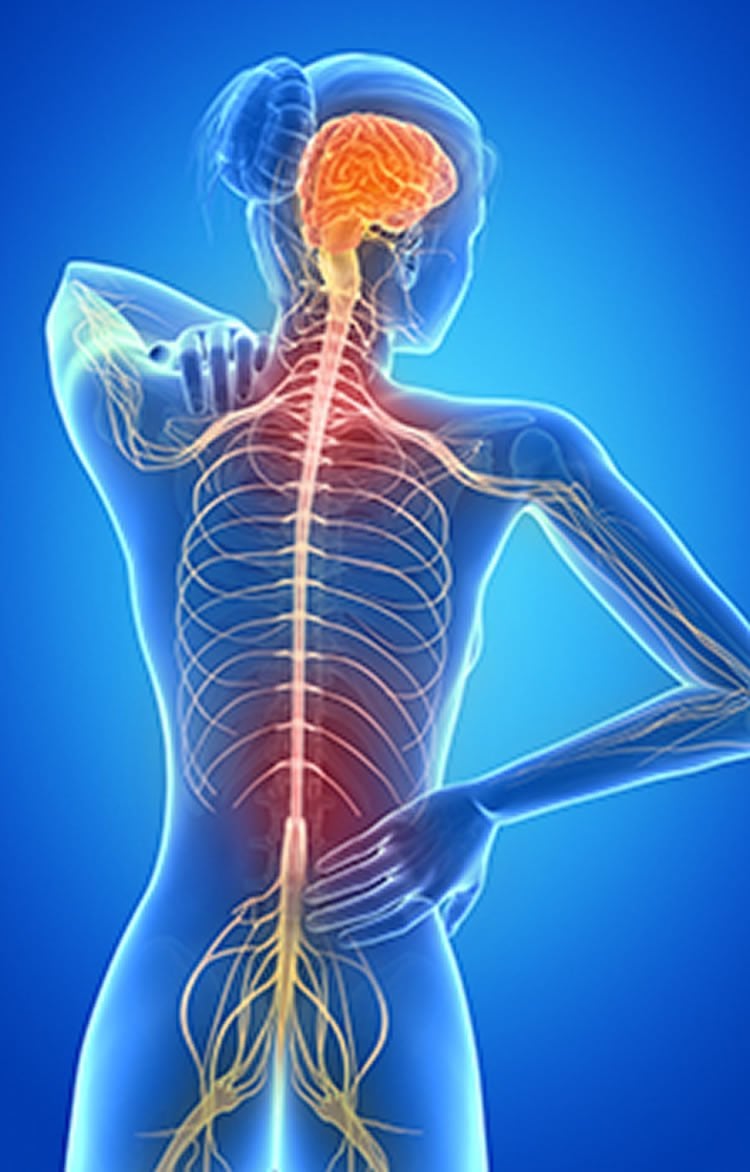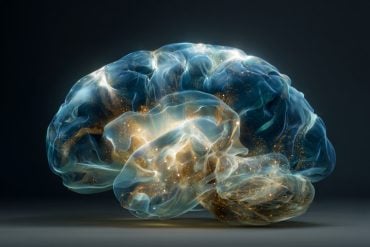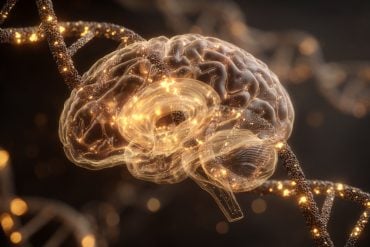Summary: Researchers reveal that a year after receiving autologous haematopoietic stem cell transplantation for relapse remitting multiple sclerosis, almost all of the patients showed no signs of the disease and the level of their disability was significantly improved.
Source: University of Sheffield.
The first ever international large scale randomised trial into autologous haematopoietic stem cell transplantation (AHSCT) in relapsing remitting multiple sclerosis (MS) has shown that the treatment stabilised the disease and improved disability in people who had experienced two or more relapses in the year before joining the trial.
During the trial, researchers recruited 110 people with relapsing remitting MS and frequent relapses on convention drug therapy.

Half of the people on the trial (55) were randomized to AHSCT, and the other half (55) were randomized to the best available drug treatment. Disability was measured using a standard assessment tool known as the ‘Expanded Disability Status Scale’ (EDSS) to see if the disease had improved, progressed or stayed about the same.
The lower levels of the scale (1.0 to 4.0) capture people who are still able to walk but have some difficulties with their vision, movement, sensation, coordination and bladder control.
The middle levels (4.5 to 6.5) capture people who have difficulties with their mobility. The higher levels of the scale capture people with more severe disability including total bed confinement in some cases.
Key findings:
- 110 people with active, relapsing, remitting MS despite being treated with disease modifying drugs were randomised to receive either the best available drug treatment or AHSCT.
- During the treatment follow up period, disability improved significantly after AHSCT.
- The EDSS score of patients receiving the transplantation improved from an average of 3.5 to 2.4, which is unprecedented in MS treatment trials. This contrasted significantly with those receiving standard drug treatment whose EDSS scores declined from an average score of 3.3 to 3.9.
- Within a year of joining the trial, only one patient in the transplant arm of the trial suffered a relapse compared to 39 relapses observed in the drug treatment arm.
- With a mean follow up of three years, treatment failure measured by disability progression was six per cent in the HSCT arm and 60 per cent in drug treatment arm.
- 30 people who were originally randomly allocated into the drug treatment arm of the trial were moved over to the transplant arm during the trial period after they had a decline in their EDSS scores. After AHSCT their scores improved from 5.2 to 2.6.
- No person in the AHSCT arm suffered any significant side effects.
AHSCT is an intensive treatment which essentially rebuilds a patient’s immune system using stem cells harvested from their own blood and bone marrow to reset it to a point before it caused MS. After having their stem cells harvested and frozen, the patient is then given a high dose of chemotherapy before the stem cells are thawed and re-infused into the patient’s blood to reboot their immune system. It is currently only suitable for patients with the relapsing remitting form of the disease who have failed to respond to standard treatments and who have lived with the disease for ten years or less.
The results, have been hailed as “hugely encouraging” by researchers Professor Basil Sharrack and Professor John Snowden from Sheffield’s Royal Hallamshire Hospital, the sole UK site involved in this landmark trial which is being led by Dr Richard Burt, of North Western University in Chicago. The trial has closed to any further patient recruitment.
Honorary Professor of Clinical Neurology at the University of Sheffield, Professor Basil Sharrack, Consultant Neurologist at Sheffield Teaching Hospitals NHS Foundation Trust, Principal Investigator at the NIHR Sheffield Biomedical Research Centre, and co-investigator of the MIST study, said: “We are very excited by these hugely encouraging findings, which are the first to assess the long-term effectiveness of AHSCT in people with the active relapsing remitting form of the disease in a phase three randomised trial.
“In the study, almost all patients receiving autologous haematopoietic stem cell Transplantation showed no signs of their disease being active a year on from having the treatment and more importantly, their level of disability improved significantly. It is also really important to emphasise that these are still early days, and the patients will be followed for five years.”
Honorary Professor of Haemato-oncology and Stem Cell Transplantation at the University of Sheffield, Professor John Snowden, Consultant Haematologist, co-investigator of the MIST study and Director of Bone Marrow Transplantation at Sheffield Teaching Hospitals NHS Foundation Trust, added: “These are significant results and we are very pleased to have worked in collaboration with Dr Richard Burt and our other international research colleagues. The initial results of the MIST trial show that this type of stem cell transplant can be delivered with acceptable safety to people with highly active relapsing remitting MS.
“However, longer-term evaluation is necessary and patients treated in the MIST trial will be followed up until 2021. It is important to stress that this treatment is unfortunately not suitable for every person with MS. This type of stem cell transplant targets the inflammatory phase of MS.”
Source: Amy Huxtable – University of Sheffield
Publisher: Organized by NeuroscienceNews.com.
Image Source: NeuroscienceNews.com image is adapted from the University of Sheffield news release.
Original Research: Abstract for “NON-MYELOABLATIVE HAEMATOPOIETIC STEM CELL TRANSPLANTATION VERSUS CONTINUED DISEASE MODIFYING THERAPIES (DMT) IN PATIENTS WITH HIGHLY ACTIVE RELAPSING REMITTING MULTIPLE SCLEROSIS (RRMS)” by Richard K Burt, Roumen Balabanov, John A Snowden, Basil Sharrack, Maria Carolina Oliveira, Flavia Nelson, and Joachim Burman. The study was presented at EBMT 2018.
[cbtabs][cbtab title=”MLA”]University of Sheffield “Stem Cell Treatment Stabilizes Disease and Reduces Disability in Multiple Sclerosis.” NeuroscienceNews. NeuroscienceNews, 26 March 2018.
<https://neurosciencenews.com/stem-cell-ms-8684/>.[/cbtab][cbtab title=”APA”]University of Sheffield (2018, March 26). Stem Cell Treatment Stabilizes Disease and Reduces Disability in Multiple Sclerosis. NeuroscienceNews. Retrieved March 26, 2018 from https://neurosciencenews.com/stem-cell-ms-8684/[/cbtab][cbtab title=”Chicago”]University of Sheffield “Stem Cell Treatment Stabilizes Disease and Reduces Disability in Multiple Sclerosis.” https://neurosciencenews.com/stem-cell-ms-8684/ (accessed March 26, 2018).[/cbtab][/cbtabs]
NON-MYELOABLATIVE HAEMATOPOIETIC STEM CELL TRANSPLANTATION VERSUS CONTINUED DISEASE MODIFYING THERAPIES (DMT) IN PATIENTS WITH HIGHLY ACTIVE RELAPSING REMITTING MULTIPLE SCLEROSIS (RRMS)
Background: We previously reported (Journal of the American Medical Association, 2015) that non-myeloablative haematopoietic stem cell transplantation (HSCT) may be performed safely in patients with multiple sclerosis and is accompanied by long-term improvement in neurologic disability. We now report results on a randomized trial of non-myeloablative HSCT versus continued treatment with standard DMTs.
Methods: Patients on stable disease modifying therapy (DMT) with > 2 relapses in the previous 12 months were randomized (1:1) to treatment with either cyclophosphamide and rabbit anti-thymocyte globulin followed by hematopoietic stem cell infusion or to a control arm with continued treatment with standard DMTs. Evaluating neurologists scoring the Expanded Disability Status Scale (EDSS) were blinded to treatment arms. Patients in the control arm who had 6 month confirmed EDSS increase of > 1 point despite at least one year of treatment (defined as treatment failure) were allowed to crossover to HSCT./br>
Results: 110 patients were randomized, 55 to each arm. Three HSCT patients were withdrawn: two for failing enrollment criteria, one for recurrent infections occurring before transplant. Five control patients were withdrawn after soliciting transplants at other centers. All patients are at least one-year post enrollment. No deaths occurred and no CTC grade 4 non-hematopoietic toxicities occurred in the transplant arm. DMTs (number of patients) used in the control arm were: natalizumab (22), dimethyl fumarate (18), fingolimod (13) interferons (10), glatiramer acetate (8), mitoxantrone (5). During the first year after enrollment, one relapse occurred on the HSCT arm versus 39 on the DMT arm (P< 0.001). Mean EDSS improved from 3.5 to 2.4 after HSCT while it worsened from 3.3 to 3.9 on DMTs (P< 0.001). With a mean follow up of 3 years (range 1 to 5 years), treatment failure was 60% (30 of 50) for the control arm and 6% (3 of 52) for HSCT (P < 0.001). For the 30 patients who failed the control arm and crossed over to HSCT, by one year after HSCT, the mean EDSS improved from 5.2 to 2.6 (P< 0.001).
Conclusions: HSCT was statistically superior to continued DMTs in patients with RRMS with > 2 relapses a year
Clinical Trial Registry: NCT00273364, https://clinicaltrials.gov/ct2/show/NCT00273364?term=NCT00273364&rank=1







